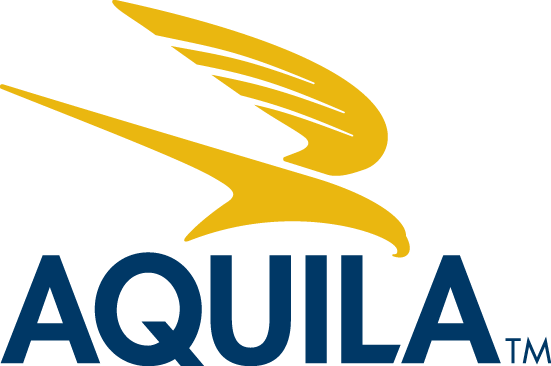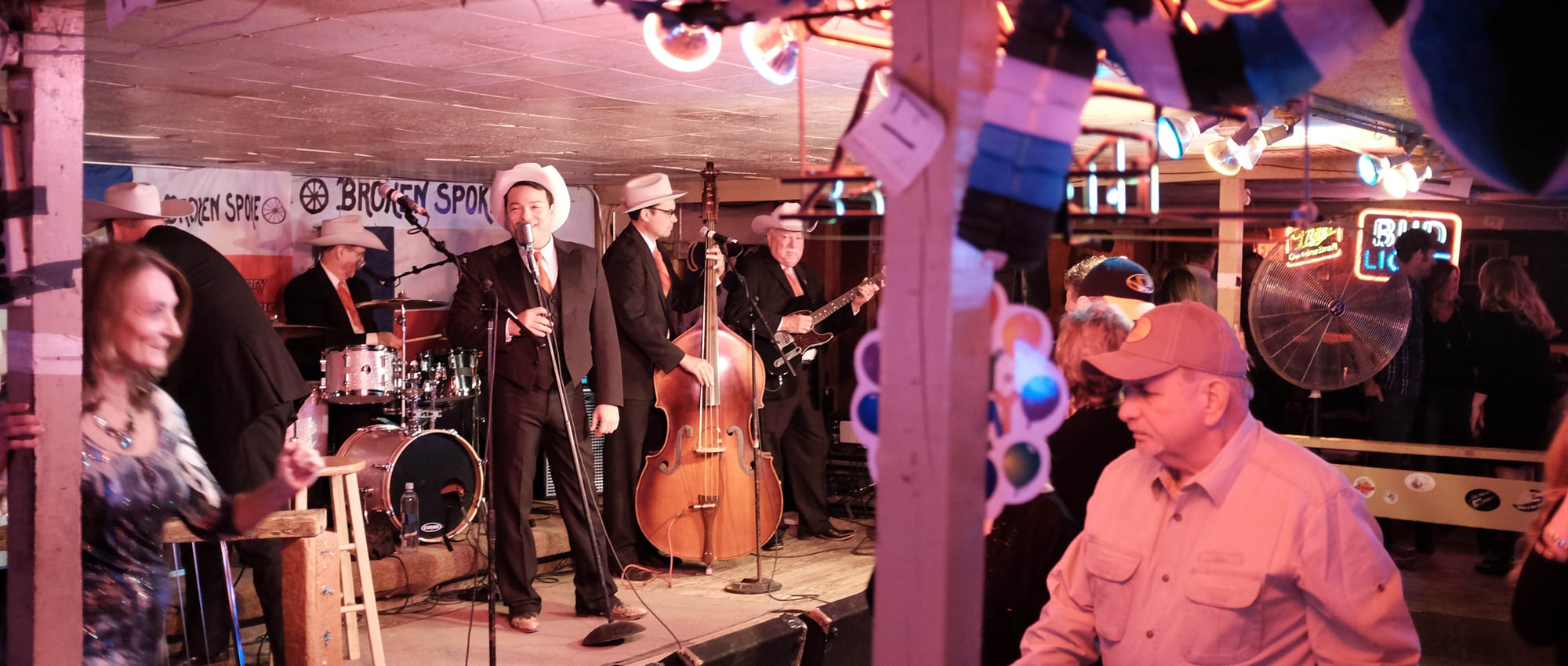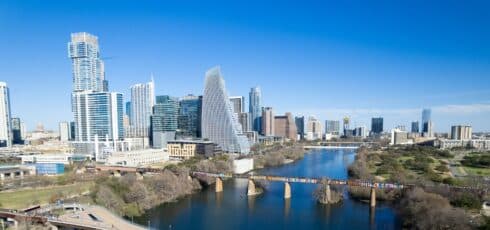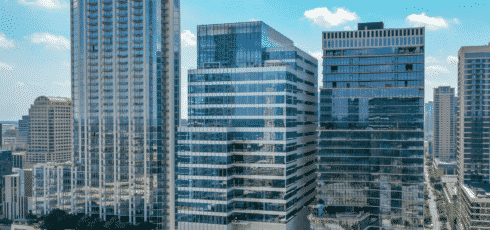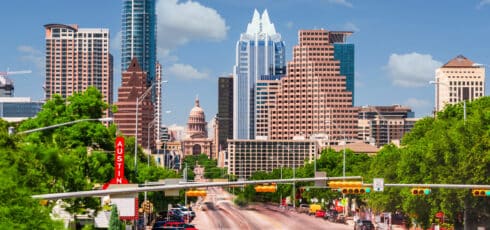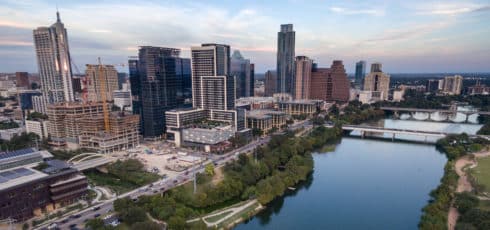This article was last updated in December 2017. Please contact us if you have specific questions regarding the information in this article.
South Lamar is a well-known Austin road spanning a little over three miles – from Lady Bird Lake to Ben White Boulevard. The area is booming with restaurants, bars, shops, apartments, businesses, and food trailers, with more popping up every day. South Lamar has been nicknamed SoLa (similar to South Congress’ SoCo) and is quickly becoming just as iconic as the popular South Congress neighborhood. It is truly an authentically Austin area that sets the city apart.
Click the links below to jump to a specific section:
- What are the best things to do on South Lamar?
- What are the best restaurants on South Lamar?
- How has South Lamar changed?
- Why is South Lamar a good spot for companies?
- Why is South Lamar a popular place for development?
- South Lamar Spotlight Infographic
Q: What are the best things to do on South Lamar?
A: The South Lamar corridor offers a little bit of everything – some of Austin’s best restaurants, numerous places to live, access to the Hike & Bike Trail, and live music, to name a few.
Q: What are the best restaurants on South Lamar?
A: Although South Lamar has world-class establishments like Uchi and a local favorite Odd Duck, my favorite would be Matt’s El Rancho, hands down. It is by far the best combination of ambiance, Mexican food, and drinks in town. There is nothing better than sitting on their patio on a Friday night enjoying a frozen margarita (or their famous Knockout Martini) and the Bob Armstrong queso with friends and family. Pro tip – try the grilled redfish tacos on flour – they’re a life-changing experience!
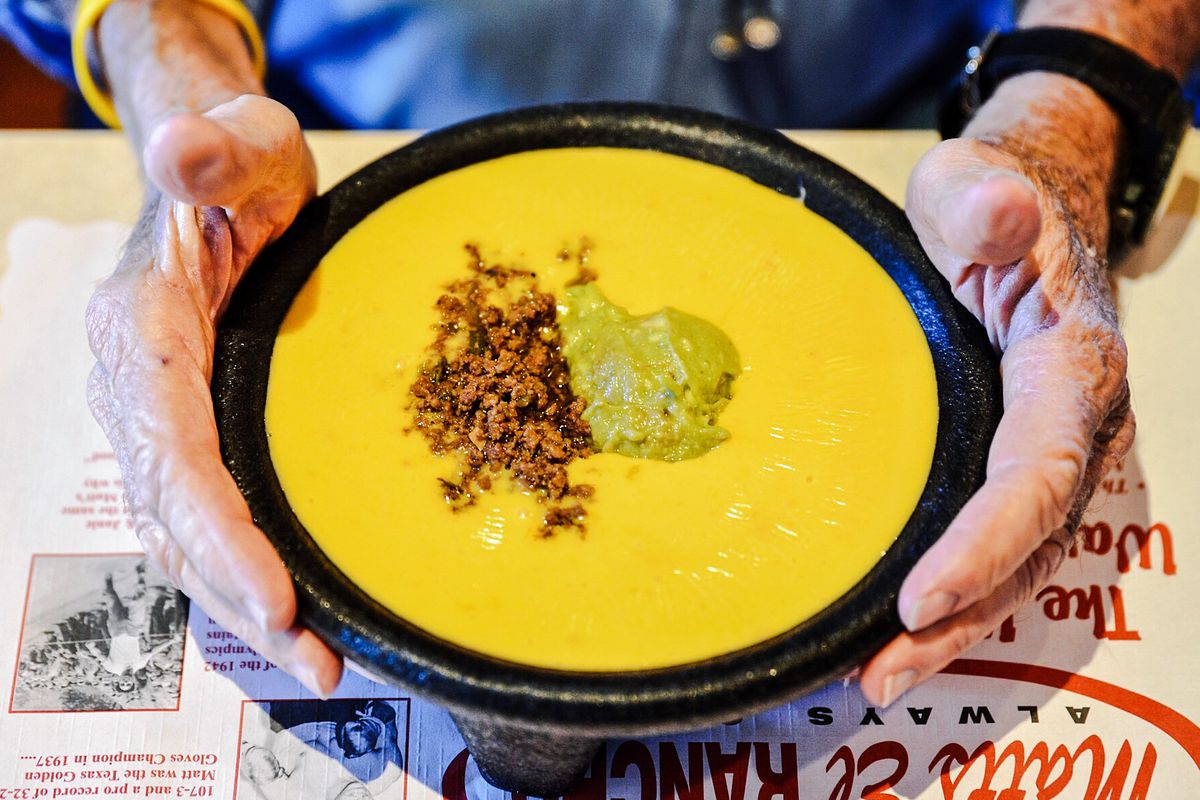
The Bob Armstrong queso at Matt’s El Rancho is an Austin favorite. Photo by Robert J. Lerma, EATX.
Q: How has South Lamar changed?
A: The South Lamar corridor, like so many other parts of Austin, has experienced significant changes in the past five to seven years, most notably the construction of over 2,500 apartment units with at least 1,000 units still under construction. This has made the area a hotbed for new restaurants, bars, and other retailers.
While few people used to actually live on South Lamar (but rather in the neighborhoods off of it), all of these multi-family developments have an actual Lamar address. This has made the street more walkable, in general, but has increased the traffic significantly. It can be an absolute bear to cross the river in the mornings toward downtown as thousands of people are feeding onto Lamar to get to work. There was recently a bond passed that includes improvements to the South Lamar corridor which are currently underway, so let’s hope that will ease some of the pain we South Lamar residents feel every day.
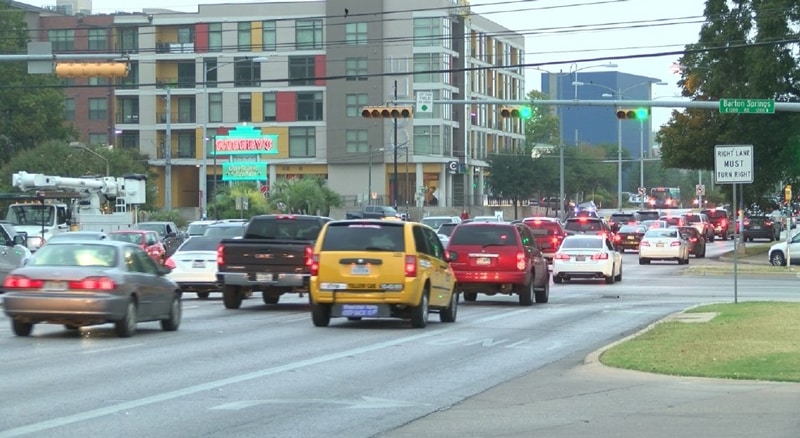
Traffic going into downtown from South Lamar has increased significantly. Photo courtesy of CBS Austin.
Q: Why is South Lamar a good spot for companies?
A: There is actually minimal office space that exists on South Lamar as nearly all of the development sites have been gobbled up by multi-family developers. That being said, there are two office projects currently under construction – a 78,000-square-foot office building at South Lamar and Hether Street and a 32,000-square-foot building at South Lamar and Bluebonnet Lane. Given the shortage of options along South Lamar, I’d anticipate that both of these projects will be fully leased before construction completes in 2018.
Q: Why is South Lamar a popular place for development?
A: More people work downtown than ever before thanks to the influx of tech companies who value the energy/culture of downtown Austin. I think people’s desire to live close to where they work is one of the main drivers for development along South Lamar and other corridors within close proximity to downtown. Additionally, as Austin’s traffic woes continue, many people (myself included) are willing to sacrifice living in a larger and/or less expensive home for the convenience of being close to restaurants, retail, and their jobs.


Related Articles:
- An Insider’s Guide to South Congress Avenue in Austin (Infographic)
- The Best of Downtown Austin, Texas (CBD): What to Do, Where to Eat and What’s Under Construction [Infographic]
- What to do in Mueller (Austin, Texas): An Insider’s Guide to This Sustainable Community [Infographic]


